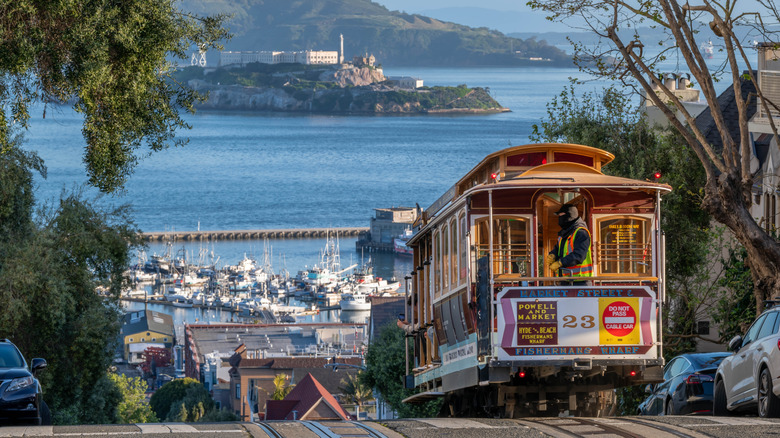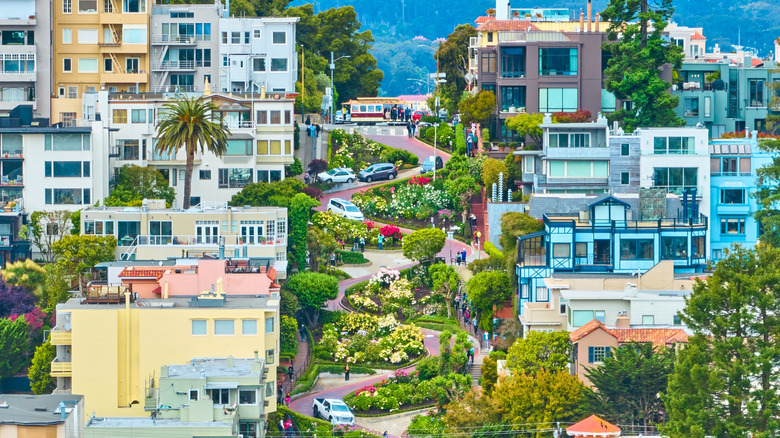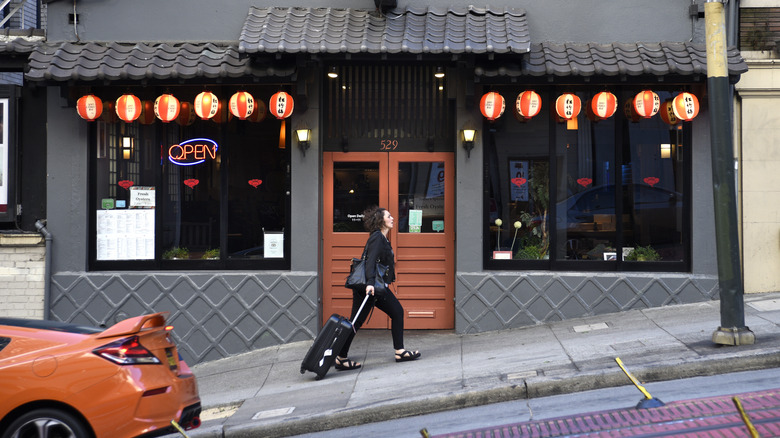The Amazing History Behind San Francisco's Incredibly Steep Streets
If you're driving in San Francisco for the first time, it's okay to bite your nails. As you approach the top of Filbert Street, one of the steepest in San Francisco, you may feel like a rollercoaster rider just before the big drop. With a grade of 31%, Filbert stretches for many blocks, and the nose of your car will aim noticeably downward. Some streets, such as Fillmore Street, are so precipitous that the sidewalks turn into stairways. The streets are generally wide and long, plateauing every few blocks to accommodate intersections. Your trepidation will only increase when your tires thud over tracks, and street cars ease narrowly past you.
You may wonder: Who looked at these breakneck hills and thought, "That's a great place to build a city!" The steep inclines are part of what makes "Frisco" so beautiful and unique. Early settlers, many arriving by ship, couldn't resist the enclosed waters of San Francisco Bay. Still, more than 800,000 residents are crowded into the tip of this peninsula, and many live on streets that any soccer ball couldn't help but roll down. Even parking your car in San Francisco requires you to master special tactics. So why did anyone build on such severe topography?
How San Francisco got its hilly streets
San Francisco is one of the best U.S. cities for history buffs, though many are unaware just how old the city is. The Spanish Empire settled here in 1776, the same year that the 13 Colonies declared independence from Great Britain, and called it Yerba Buena. The city became part of the U.S. after the Mexican-American War in 1846, when it was given the name San Francisco. At the time, the village claimed fewer than 1,000 residents.
That all changed in 1848 when a carpenter named James Marshall stumbled into some gold in Sutter's Fort. Today, that site along the American River is in the capital city of Sacramento, but the news of valuable metal in California triggered the tsunami of fortune-seekers known as the Gold Rush. San Francisco offered a convenient place to land, so the city became a so-called "golden gate" for all these new arrivals –– hence the name of the city's most famous bridge. These pioneers were known as "Forty-Niners," named for the year the Gold Rush began in earnest.
San Francisco's population exploded in the next five years, transforming it from a sleepy village to a city of 150,000. These guys weren't exactly urban planners, so they settled wherever they could, including the breathless slopes of San Francisco's hills. Plus, the rapid influx of so many gold-seekers also meant that there was little time to level the land before they moved in. The city grew steadily until 1906 when a devastating earthquake (7.6 on the Richter Scale) knocked down many of the buildings while a massive fire tore through the city for four days. Around 3,000 people probably died and the city was almost destroyed.
The legacy of San Francisco's hills
Today, San Francisco is considered one of the most beautiful cities in the country and the rolling scenery is part of its appeal. From the tops of hills, visitors can gaze across the dense blocks and glistening bay, or watch the famous fog roll in. While cataclysmic earthquakes are never a good thing, the 1906 disaster did lead to widespread reconstruction, and the "rough and ready" city erected by gold diggers was replaced with more intentional designs. All kinds of architectural styles are represented here, from Queen Anne to Craftsman, and they have all been adapted to the sloping ground beneath them.
San Francisco is also a ripe setting for Hollywood blockbusters, and several famous car chases have been staged atop these undulating avenues. The most famous is Steve McQueen's hubcap-wrecking ride in the 1968 thriller "Bullitt," followed by Sean Connery's explosion-laced getaway in the 1996 action movie "The Rock" and the special effects-happy 2018 superhero film "Ant-Man and The Wasp." All of these entries lovingly explored specific streets and put those dizzying inclines to good use.
Plenty of travelers drive into San Francisco, often crossing the Golden Gate Bridge, a popular California bucket list item. But you don't actually have to use a car here. You could fly into San Francisco International Airport and hop a Bay Area Rapid Transit (BART) train into the Mission District in about 35 minutes. Notably, the BART system is all-electric and runs throughout the metro area, making it a great option for eco-friendly commuters and travelers. San Francisco sidewalks may rise and fall, but the city is considered one of the most walkable in the U.S. Most Forty-Niners didn't become millionaires, but the city they founded sure is solid gold.


